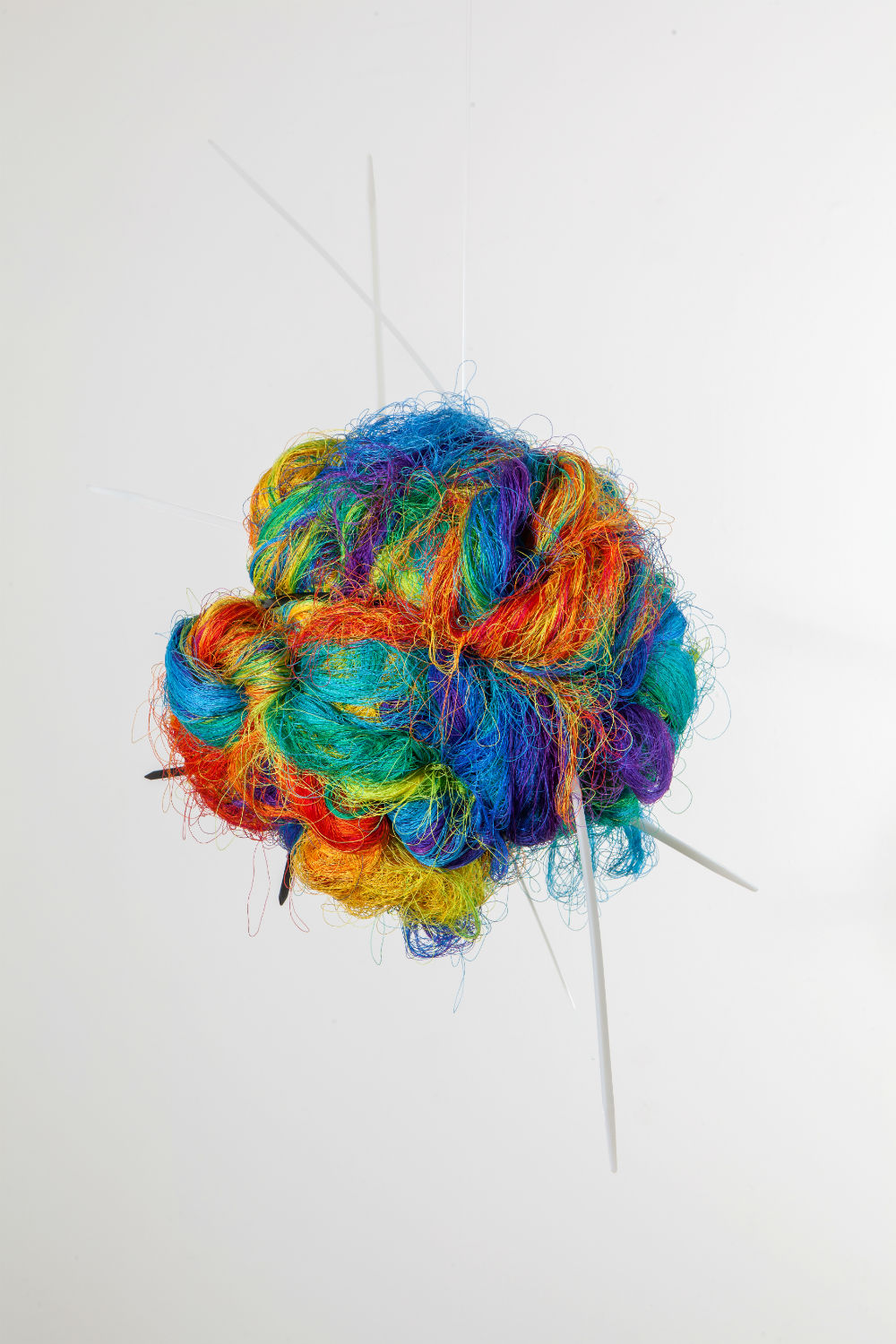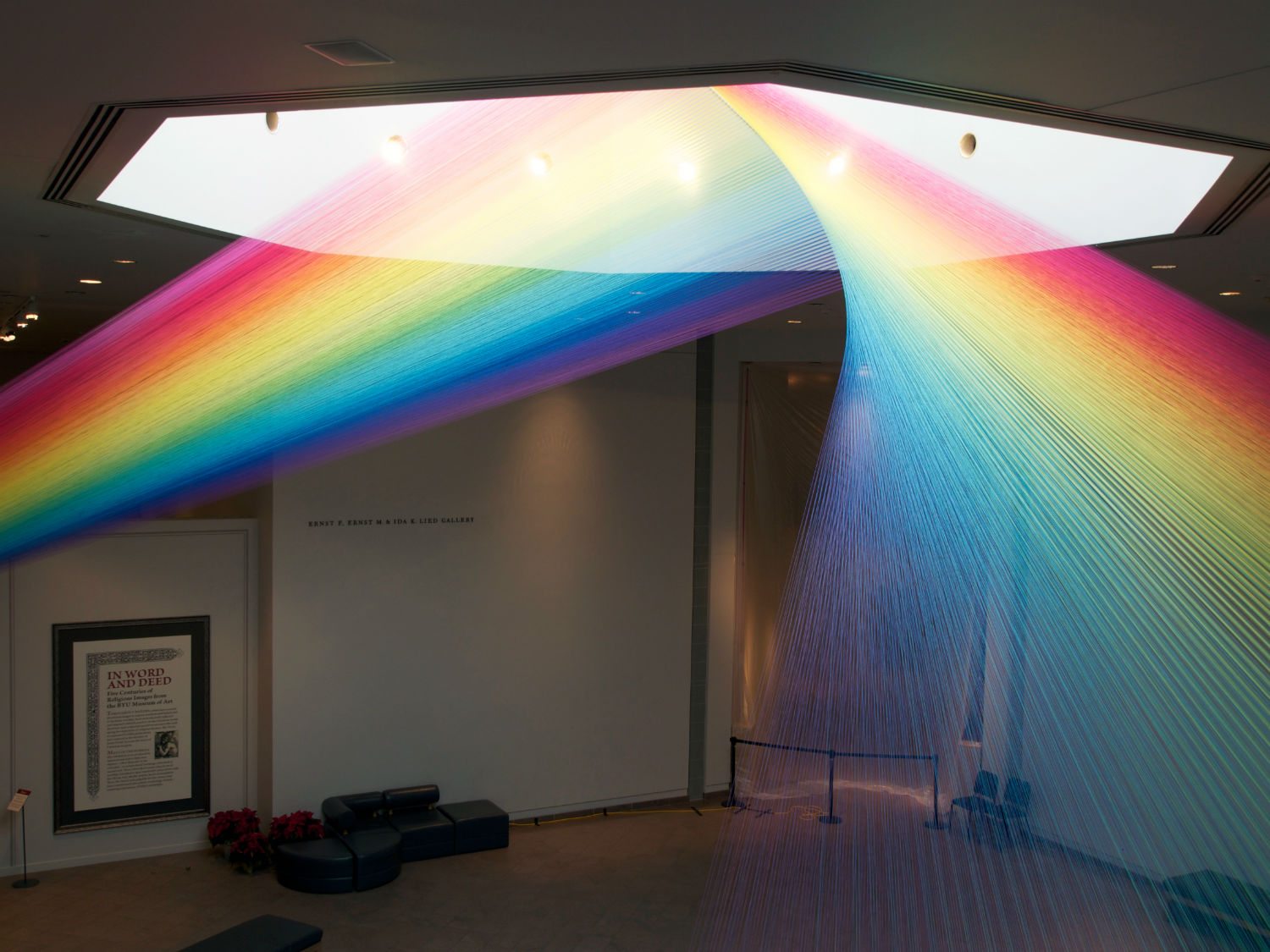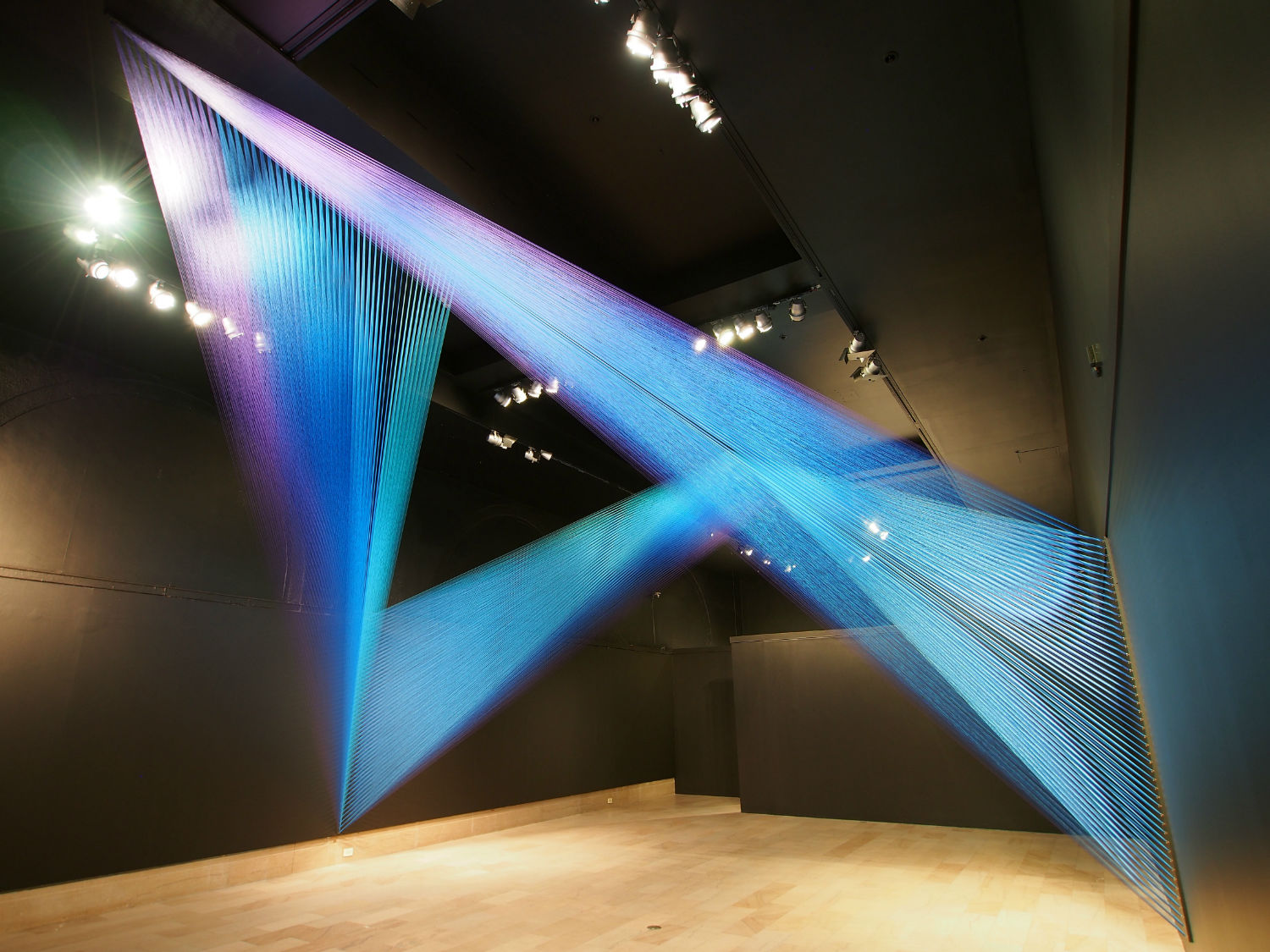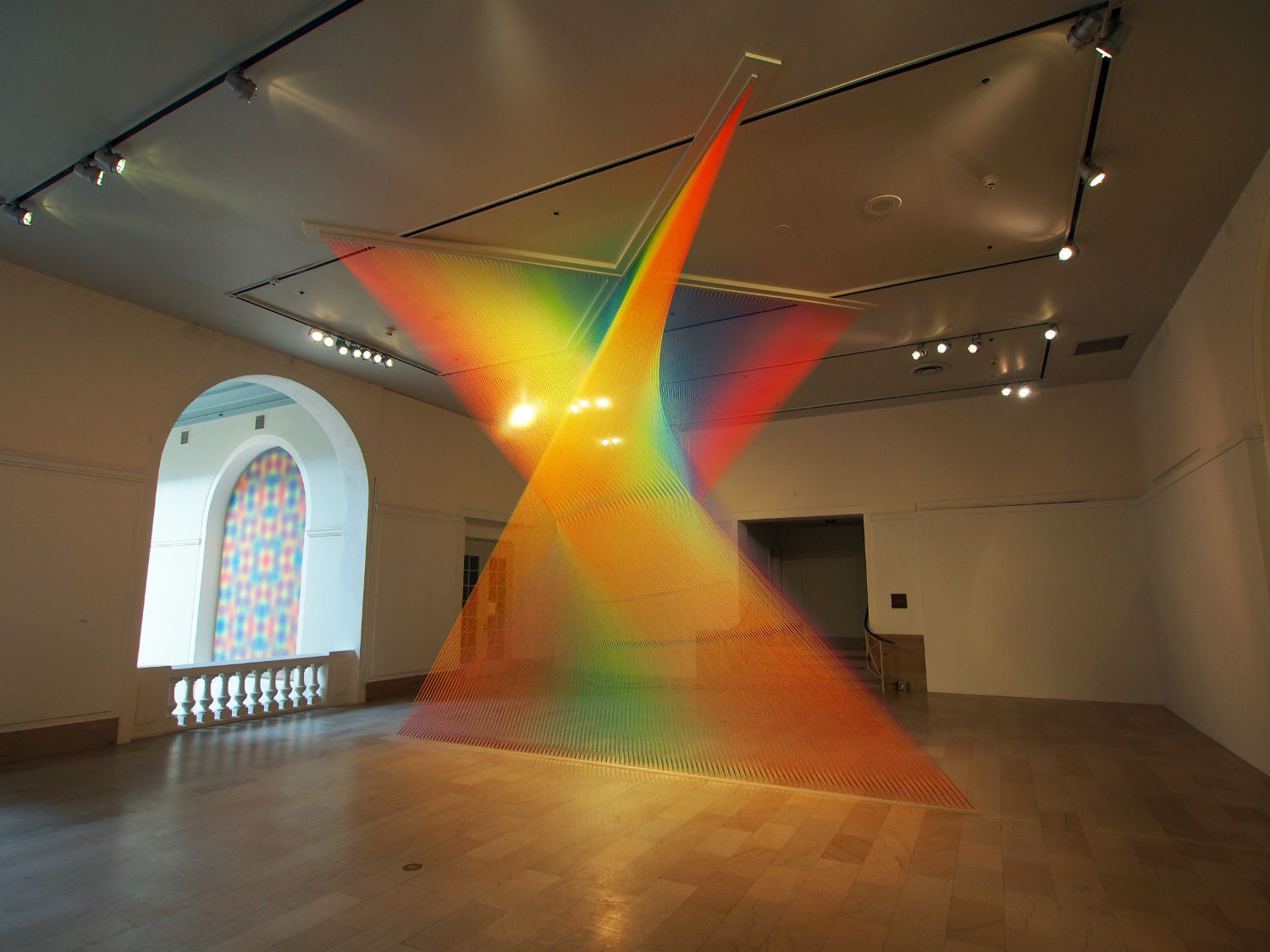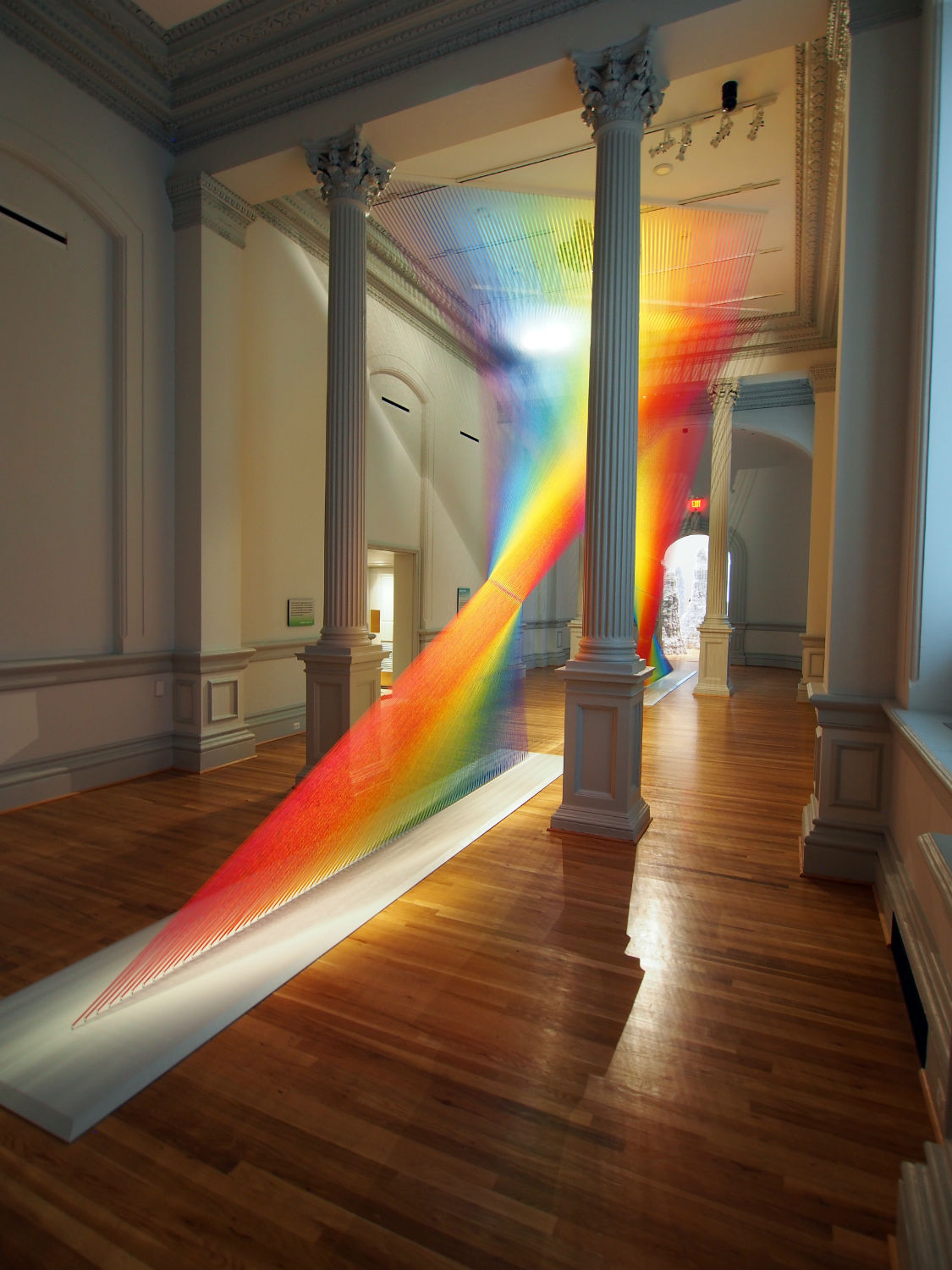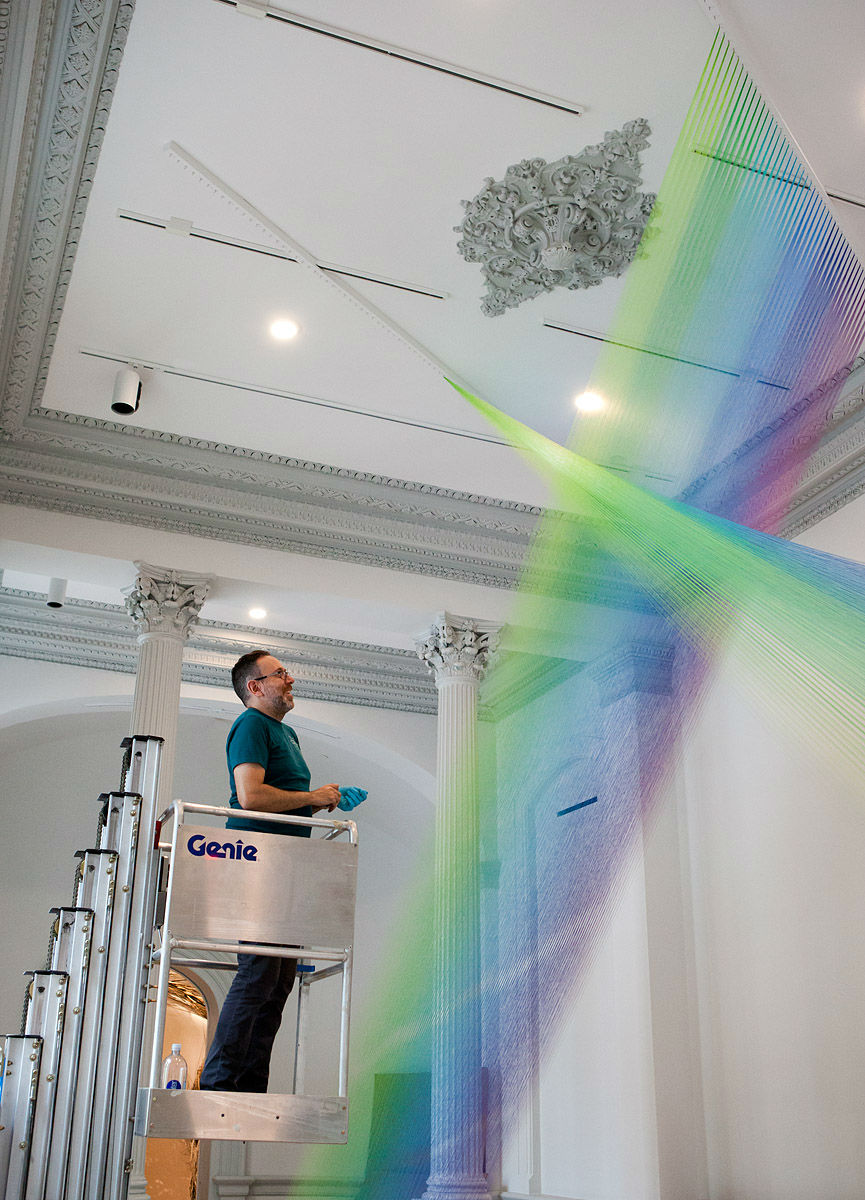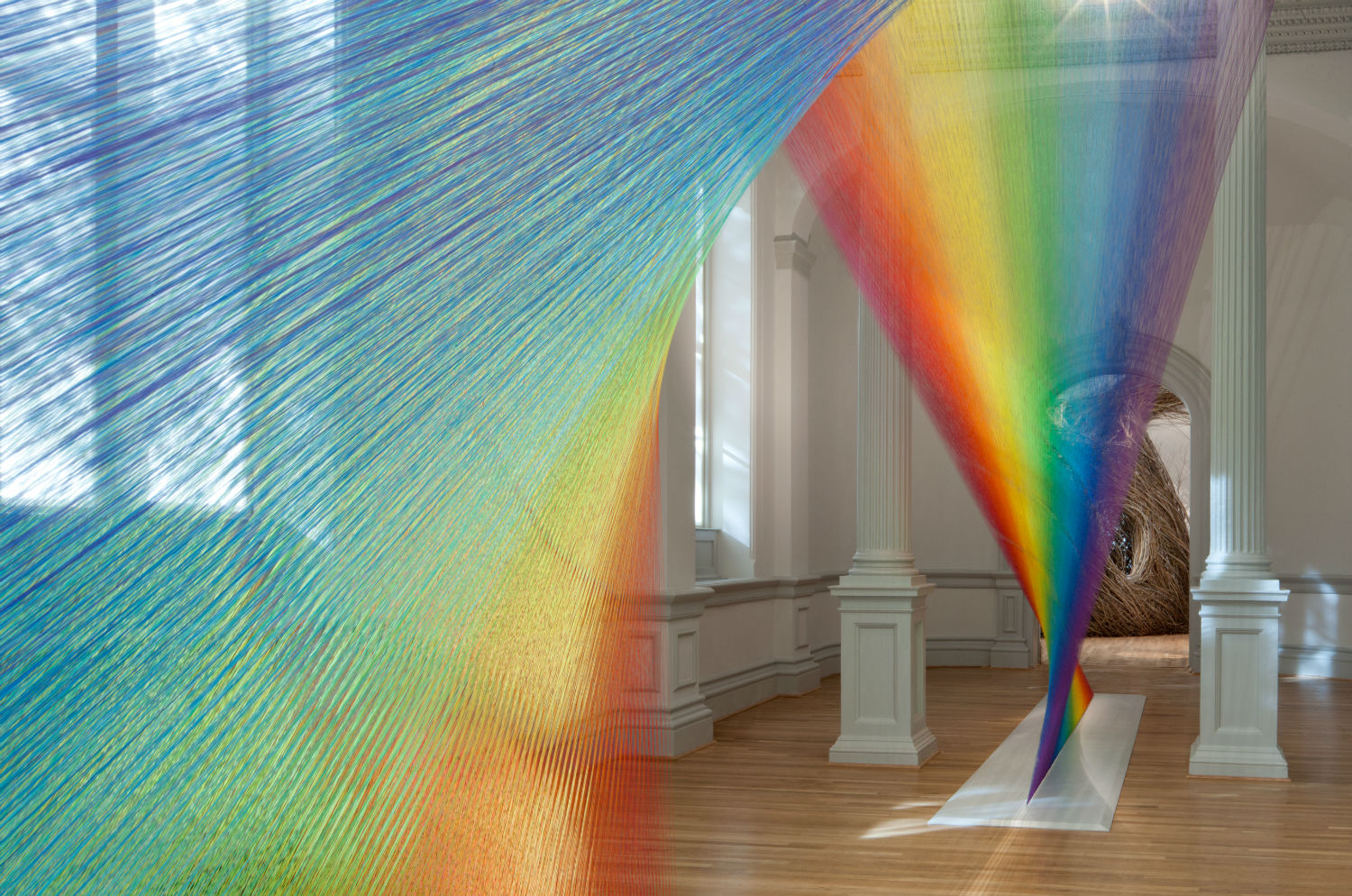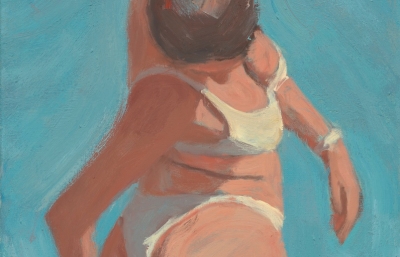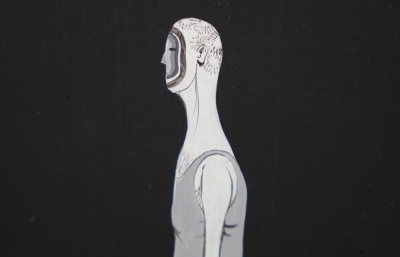Dallas-based artist Gabriel Dawe does not settle for doing things the easy way. His ambitious, site-specific Plexus installations elevate multiple mediums, primarily fiber and sculpture, into very lofty territory, often literally. The labor alone is formidable, demanding patience and precision in transforming raw material into sculpture, all the while adhering to the structure and contours a space demands.
Inspired by a fundamental appreciation for the emotional, profound proclivities of light, these works examine the infinitely complex relationship an individual can experience with an element’s natural properties.
Having a prior background in both fashion and 3D constructions, aspects of both have evolved into the stunning, off loom, enigmatic forms we see today. This is the kind of work that widens the scope of manipulating light, color, gradient, mass, transparency and gravity, and when viewed in person, channels a deep, contemplative splendor, infused with harmony. Despite their delicate appearance, they are still works of great strength and structure, pressing the material to explore volume, weight, balance, shape and material, the very core of sculpture.
This is an excerpt from the July, 2016 issue of Juxtapoz. Subscribe and save 60%!
Gabe Scott: What drew you to fiber and textiles as a preferred medium? The way you approach a simple medium from a mathematical standpoint is very compelling.
Gabriel Dawe: It started as a form of rebellion against certain aspects of my upbringing. Now I really see the blessing, but when I was a kid growing up in Mexico City, it was very frustrating to not be allowed to sew by my grandmother because I was a boy. My parents were actually fairly liberal and non-traditional. My mother was the first and only woman in her family who had a job outside the home, and because of that, my sister and I spent a lot of time in the care of our maternal grandmother. For all the progressive education my parents gave us, we got bucketloads of traditional views shoved down our throats by my mom’s family. Looking back, it really seems screwed up, because we were constantly being tugged in opposite directions, which can be very confusing to a child. When I was living in Montreal in my late twenties, I recalled that frustration and decided to teach myself to embroider. It became an exercise in reversing many years of machismo indoctrination, which had never fully taken hold, but kept lingering in certain beliefs as well as personal fears.
In order to achieve the 3D Plexus installations, I imagine a significant amount of calculation is required. I know you have a background in graphic design, as well as arts and technology. How complicated is it to compose your site-specific pieces, particularly when you are working with a variety of architectural styles?
Well, here’s a disclaimer regarding my MFA in Arts and Technology: I mostly skipped the technology bits, so don’t be fooled by my technological prowess. Planning an installation in my mind, it’s really not that complicated. I’m only using basic geometrical principles coupled with simple math.
The most complex math formula I use is Pythagorean Theorem (a^2 + b^2 = c^2), but otherwise it’s all easy stuff. I don’t use 3D rendering software and the work is not computer-generated either. At the beginning, it was just a big experiment that started to give interesting results. The first year, there was a very steep learning curve. Each new space gave me an opportunity to see what I could accomplish. Some spaces are easier to approach than others. I could go into one and have an immediate response that would translate into a clear idea right off the bat. And then there are spaces that require more pondering and musing. Also, the challenge is to find new ways to use what I know about the installations to achieve new forms or tackle new configurations. I’ll concede that it’s not always easy. I’ve come up with ideas that make sense in my mind, but, on further inspection, I find myself with what I call a logistical impossibility. This means that because of the installation process, it becomes impossible to recreate, but I’m almost certain that there is a way waiting to be figured out. So it’s sometimes about solving a puzzle. There are always new things that I’m learning about the installations and that’s what keeps it interesting to me.

Portrait by Jeremy Biggers
Do you also have a strong interest in structural design?
No. I’ve always loved geometry, but for me, it’s all about the visual experimentation. I don’t really know much about formulas. I recently asked a mathematician friend if there was any link to any mathematical principles and he pointed me towards quadratic surfaces. If you do a Google search, you’ll see the resemblance to my work, but all the formulas they’re related to are a bit (or rather, completely) beyond my understanding.
One of the things that drew me strongly to your work was beyond the physical achievements, which I do find astounding. It was the stories you have told about your love of the sky and clouds, as inspired by your parents. I share my mother's passionate adoration for the sky as you do, and my stepfather is a painter who has an extraordinary gift for translating the emotive qualities the sky, clouds and colors can radiate together. You have also mentioned that your true appreciation for the gradation and light came to you in Dallas. I had a series of similar revelations when I moved to Denver, so reading your statement struck many unexpected chords with me. Was there one specific celestial epiphany that happened in Texas? Can you convey feelings about your connection to that area?
It was definitely a series of them, and I think it even started before moving to Texas. I particularly remember one evening in Montreal, when I was with a friend on a terrace right after sunset, and pointed out the intense blue color of the sky. I remarked how much I loved that intensity, and I believe that was the first time I had ever put it into words, which I think is how it started to become a conscious thing. Shortly after moving to Texas, I had to spend over an hour commuting by train to go to grad school, and spent endless moments just gazing out the window at the sky. Everything being so vast in Texas, and the train being elevated part of the way, I started appreciating dramatic effects that I’ve never really seen anywhere else; not because they don’t happen in other places, but there are no tall buildings obstructing your view.
The first time I saw your work in person was at Zadok Gallery in Miami. If I recall correctly, part of the exhibition featured your computations and tactical approach, followed by the installation itself, and then a series of plexiglass boxes packed with fibers, presumably left behind from previous deinstallations. It felt like a metaphor for the cycle of life itself. The notes on paper exist as conception, the sculpture is meticulously constructed, shaped and formed and is on display for a moment in time, and then finally memorialized in those plexi boxes. Is there any truth to that? Are those all common presentation methods for you?
That is a very accurate interpretation. There’s definitely a reference to the life and death dichotomy. In fact, I call the threads that comes down from an installation Relics, which is a concept borrowed from Catholic lore. When the first installations started to come down, I was enthralled with the lumps of thread I ended up with. It really compelled me to do something else with them. It’s really, as you allude to in the question, an exercise in opposites. The grand and ethereal quality of the installations transforms into something small and dense. The installations are about the geometry formed by straight lines, whereas the Relics become very organic. I would put the remains in the plexiglass cubes, or even frames, at first.
Recently, I’ve been playing with the bundles themselves, holding them together with cable ties, knots, brackets, and other means that help to leave room for intimacy between the object and the viewer. I showed some of these at a show last year titled Requiem for a Fallen Structure, paired with drawings of what the installations used to be. They also relate to how certain structures in society fall down or get discarded and then tossed out. Every day we have this “dance” with social norms and structures, which dictate how we are to behave at any given moment. Similarly, when you’re close to one of the installations, you have to have a similar dance, where you’re not quite sure where the installation actually is—because they play with your depth perception—resulting in a symbolic representation of how we interact with those social norms. When the installations are taken down, the tension that held them in place is lost and a new and opposite tension holds the old structures tight in a bundle, as if trying to keep it in check.
----
Read the full interview in the July, 2016 issue of Juxtapoz Magazine, on newsstands worldwide and in our webstore.


